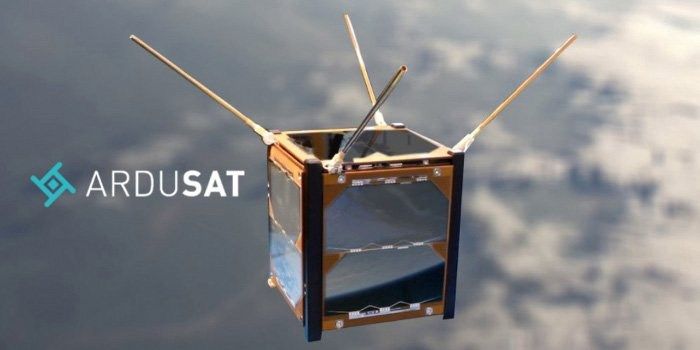This is ground control to Major Tom, you’ve really made the grade.
There’s a difference between the way boys learn and the way girls learn, claims Sunny Washington, president of Ardusat. “The biggest thing between boys and girls when it comes to learning about science or technology is girls like to tie their projects to a cause or make a difference. That’s not how we teach STEM topics in the classroom — it’s really catered more to how boys learn,” Washington says.
Washington, herself a person of the girl variety, has devoted her entire career to making a difference. Specifically, a reform in science, technology, and math education. For Washington, this cause is personal. “I have a daughter and I get sad when I look at her homework, I get sad that she learns math the same way that I did 30 years ago,” she says.
Washington’s 8-year-old daughter is in the third grade and loves science. She loves experimenting with tools and figuring things out. However, there’s a risk that her daughter, like many girls before her, will soon lose interest in STEM education. “If we start too late, then a significant number of girls become disinterested and won’t pursue STEM careers. That’s 50% of our future workforce that we need to make sure we don’t leave out of the picture,” Washington says.
![]()
Most of us care about our children’s education, but not many of us go to quite the lengths Washington has to ensure a better future for the next generation. I personally like to turn on PBS and hope that the good people of Sesame Street will teach my daughter everything she needs to know. Washington stepped away from Instructure, where, as employee number seven, she watched the company grow into the success it is today, to become president of Ardusat, a startup that is willing to go to the literal ends of the earth and beyond to teach girls and boys alike just how cool science, math, and technology really are. Her and I just have different parenting styles I guess…
“[A friend] told me that this company builds nano satellites and wanted someone to run an edtech company where students could create and run their own experiments in space using the satellites. I knew that it could be an amazing opportunity so jumped right on it. I had a great job and worked with great people at Instructure, but was excited to venture into working with space,” Washington says.
Well, sure, it’s hard to pass up on space and nano satellites. But how can this be an actual, affordable education program and not some sort of elaborate George Lucas production? It’s simpler than you (fine, I) might have thought.
Ardusat is the exclusive education partner of Spire, a satellite company building and launching satellites faster than anyone else on the planet. These CubeSat satellites are small enough and light enough to be transported as a secondary payload on rockets. The satellites are then launched from the International Space Station to orbit earth. Each satellite is equipped with sensors to collect data on earth, the same sensors that are available to students in Ardusat classrooms to run experiments. Students can communicate with the satellites in orbit to run their experiments in space.
![]()
I doubt there’s a single girl, boy, dog, cat, robot, or mythical creature that wouldn’t find the idea of conducting experiments IN ACTUAL OUTER SPACE totally radical. Ardusat, however, still goes the extra mile to ensure that girls in particular connect with these experiments in a way that will keep them interested in STEM education.
“At Ardusat we’re not specifically catering to girls, but our program lends itself well towards how boys and girls like to learn,” Washington says. “For example, you can take one of our experiments like measuring g-force. There’s a great hands-on element for the students to measure acceleration rates by attaching an accelerometer to a fast moving object which boys love. But also, we can learn why understanding g-force is important — it’s why we’re required to wear seat belts and wear bike helmets. It saves lives — making a difference which lends itself to girls.”
Schools across the country have signed up to receive Ardusat curriculum and the company hopes to see 1 million students across the world running experiments in the near future. Many school principals have already reached out wanting to make Ardusat part of their classroom curriculum. Educators are often able to cover the cost of a Classroom Launch Pack with STEM government allocations or similar grants.
Ardusat started as a Kickstarter campaign to make space accessible to students and not something reserved just for the government and the wealthy. Ardusat also received initial seed funding from Spire, and is currently in the process of raising additional funds.
“We have about half of our round filled. This was a new experience for me and I’ve learned a lot about the process. A lot of the entrepreneurs here in Utah have been super helpful and great to share advice with me, make introductions, etc. I’ve really appreciated that,” Washington says.
Ardusat will be participating in BoomStartup’s upcoming Winter Cohort in Park City, where Washington looks forward to making connections and raising capital for her company. “We were really impressed with the amount of mentorship that they will be providing as we look to define our product and our strategy,” she says.
Ardusat, under Washington’s direction, will continue working with educators to see their goal of making space and STEM education available to earthlings of all genders.
“I’ve made it my career to work with companies and products to make [educator’s] lives easier so they can focus on what they do best — educating our kids,” Washington says.
As a mother of a daughter, I’m sure glad she has.
Published 11/18/2014




